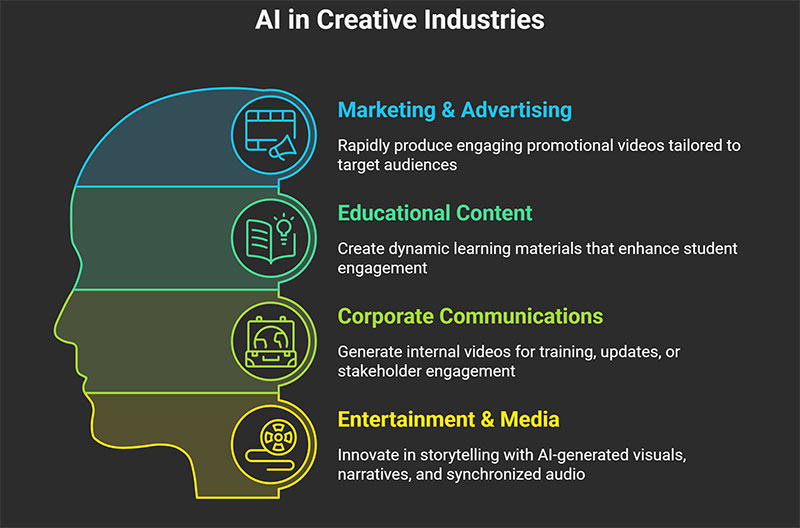What are the implications of Google’s Veo 3 to the AI landscape? Google continues to push the boundaries with this latest innovation—Veo 3, an advanced AI-powered video generation model. This groundbreaking technology promises to revolutionize how content creators, businesses, and developers produce high-quality videos efficiently and creatively. As AI-driven tools become more sophisticated, industry insiders are particularly excited about the potential applications across various sectors, including media, education, and corporate communications (1,2,4).
What is Veo 3? An Overview of Google’s Latest AI Video Technology
Veo 3 is the newest iteration of Google’s AI video generation models, designed to produce realistic, high-quality videos from minimal input data. Building upon the foundations laid by its predecessors, Veo 3 leverages advanced deep learning techniques and neural network architectures, such as those developed by DeepMind, to generate videos that are both visually compelling and contextually accurate (2). The model is trained on over 20 million hours of video and audio, utilizing a multimodal transformer backbone that processes both video frames and audio waveforms simultaneously for synchronized, cinematic results (2).
Key Features of Veo 3:
- Enhanced Realism: Utilizes advanced generative models to produce lifelike videos with improved detail, accurate motion, and convincing human features. Veo 3’s outputs are often indistinguishable from real footage, with accurate lip-syncing and continuity (1,2,5).
- Multimodal Capabilities: Generates video from text and image prompts, allowing for diverse content creation. Some advanced modular controls, such as ingredient control and frame-to-video animation, still rely on earlier versions of the model (2).
- Customizability: Enables users to iterate on prompts, refine details, and personalize videos with specific themes, styles, and narratives (2).
- Native Audio Generation: Veo 3 can produce videos with integrated audio—including dialogue, ambient effects, and music—setting it apart from many competitors (1,2,5).
- Efficiency: Significantly reduces the time and resources required for video production, making high-quality content accessible to smaller teams and individual creators (1,4).
Note: As of May 2025, Veo 3 is available to users in select countries, including the United States, Canada, and the UK, through Google’s AI Ultra plan via the Flow interface, with a subscription fee of approximately $249–$250/month (3,4).
How Veo 3 Is Transforming Content Creation
The integration of Veo 3 into Google’s ecosystem marks a transformative shift in digital content creation. By automating complex video production processes, Veo 3 empowers users to generate professional-grade videos with minimal technical expertise (1,2,4).
Practical Applications:
- Marketing & Advertising: Rapidly produce engaging promotional videos tailored to target audiences (1,2).
- Educational Content: Create dynamic learning materials that enhance student engagement (2).
- Corporate Communications: Generate internal videos for training, updates, or stakeholder engagement (2).
- Entertainment & Media: Innovate in storytelling with AI-generated visuals, narratives, and synchronized audio (1,2).

The Broader Impact: Ethical Considerations and Industry Trends
While the technological advancements of Veo 3 are impressive, they also raise important questions about ethics, authenticity, and the future of employment in media-related fields (1,2). The rise of AI-generated content prompts discussions around copyright, misinformation, and the need for responsible AI use. Google and its partners are actively addressing these issues by implementing safeguards, and transparency measures, and promoting responsible AI development (2).
Looking Ahead: The Future of AI-Generated Videos
As Google continues to refine Veo 3, the potential for AI-generated videos to become a standard tool across industries is immense. The technology’s ability to produce customized, high-quality content swiftly could democratize video production, making it accessible to a broader audience (2,4).
Future Trends to Watch:
- Integration of Veo 3 with other AI tools for seamless content workflows (2).
- Enhanced personalization features driven by user preferences (2).
- Greater emphasis on ethical AI use and combating misinformation (1,2).
Final Thoughts
Veo 3 marks a significant milestone in the evolution of AI-powered video generation, offering unprecedented capabilities for creators and businesses alike (1,2). As this technology advances, it will be essential to balance innovation with ethical considerations, ensuring AI enhances human creativity rather than replacing it.
Stay tuned for more updates on how Google’s Veo 3 and similar innovations continue to shape the future of digital content.
FAQs
- What is Google Veo 3 and how does it differ from previous AI video models?
Veo 3 is Google’s latest AI video generation model that not only creates highly realistic videos from text and image prompts but also generates synchronized audio, including dialogue, sound effects, and music. This audio integration marks a significant upgrade from Veo 2, which produced silent videos (2,5,7). - How can I access Veo 3 and what does it cost?
Veo 3 is currently available to subscribers of Google’s AI Ultra plan in the United States, priced at $249.99 per month. It can be accessed via Google’s Gemini app and the Flow filmmaking tool and is also available to enterprise users through the Google Vertex AI platform (2,7). - What types of videos can Veo 3 generate and what are its practical uses?
Veo 3 can create a wide range of videos, from promotional marketing clips and educational content to entertainment and corporate communications. It excels at following complex prompts to produce cinematic-quality videos with realistic physics, lip-syncing, and lifelike human features, making it useful for creators, marketers, and media studios (1,6,7). - What are the ethical considerations and challenges associated with Veo 3?
While Veo 3 offers powerful creative tools, it raises concerns about authenticity, copyright, misinformation, and the impact of automation on employment in media fields. Google is addressing these issues by implementing safeguards and promoting responsible AI use, but debates about ethics and transparency continue in the industry (1,6,7).
Citations:
- https://www.axios.com/2025/05/23/google-ai-videos-veo-3
- https://ponderwall.com/index.php/2025/05/25/deepmind-veo-3/
- https://onedollarvps.com/blogs/how-to-access-google-flow-veo-3
- https://www.bizzbuzz.news/technology/google-unveils-new-ai-video-tool-heres-all-we-know-1362588
- https://gulfnews.com/technology/veo-3-ai-googles-new-video-tool-adds-sound-dialogue-and-realism-1.500137755
- https://deepmind.google/models/veo/


